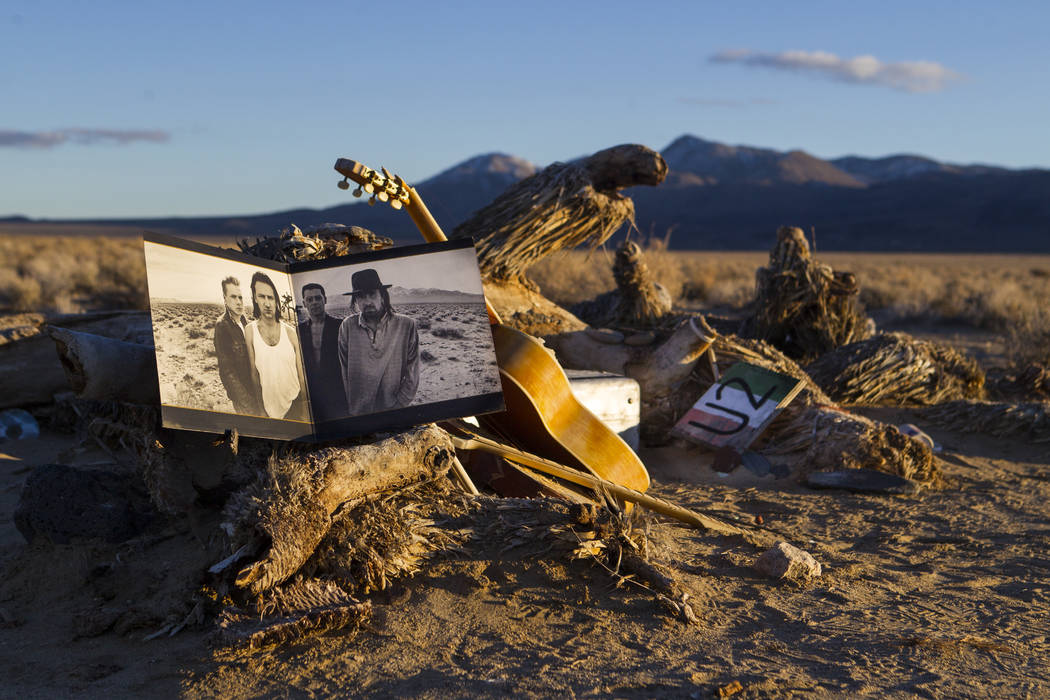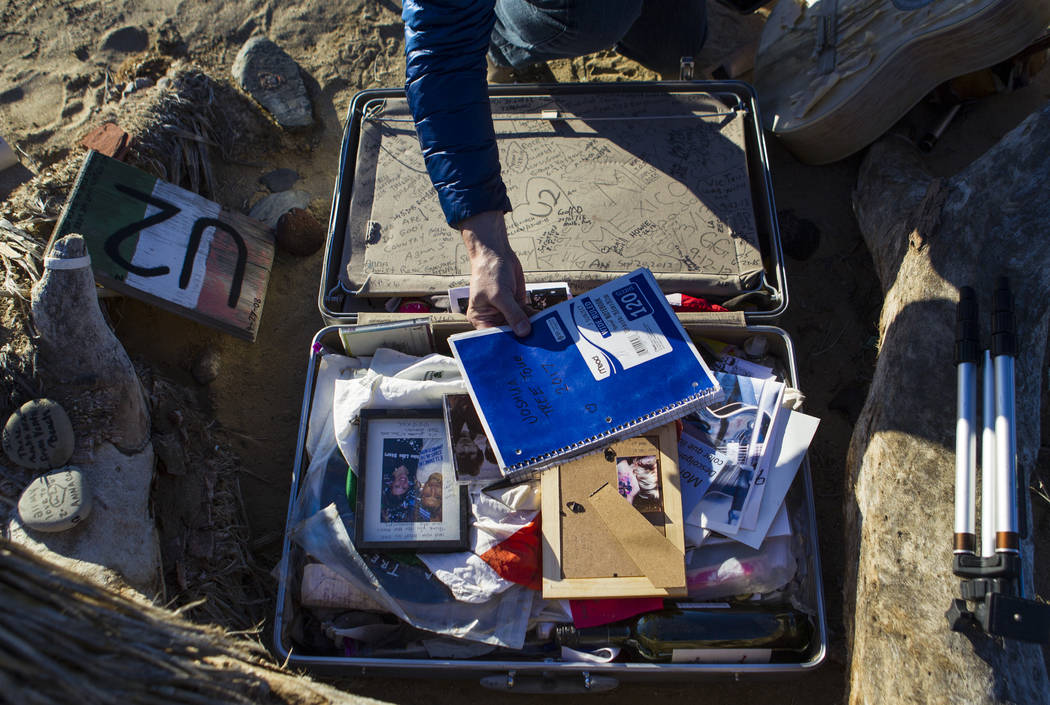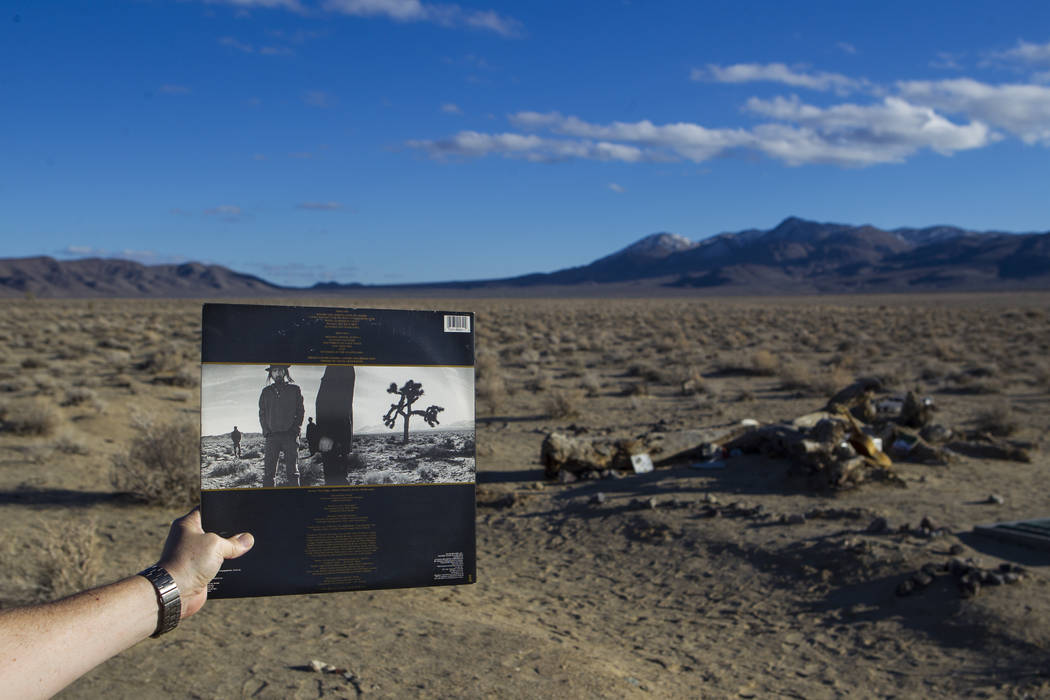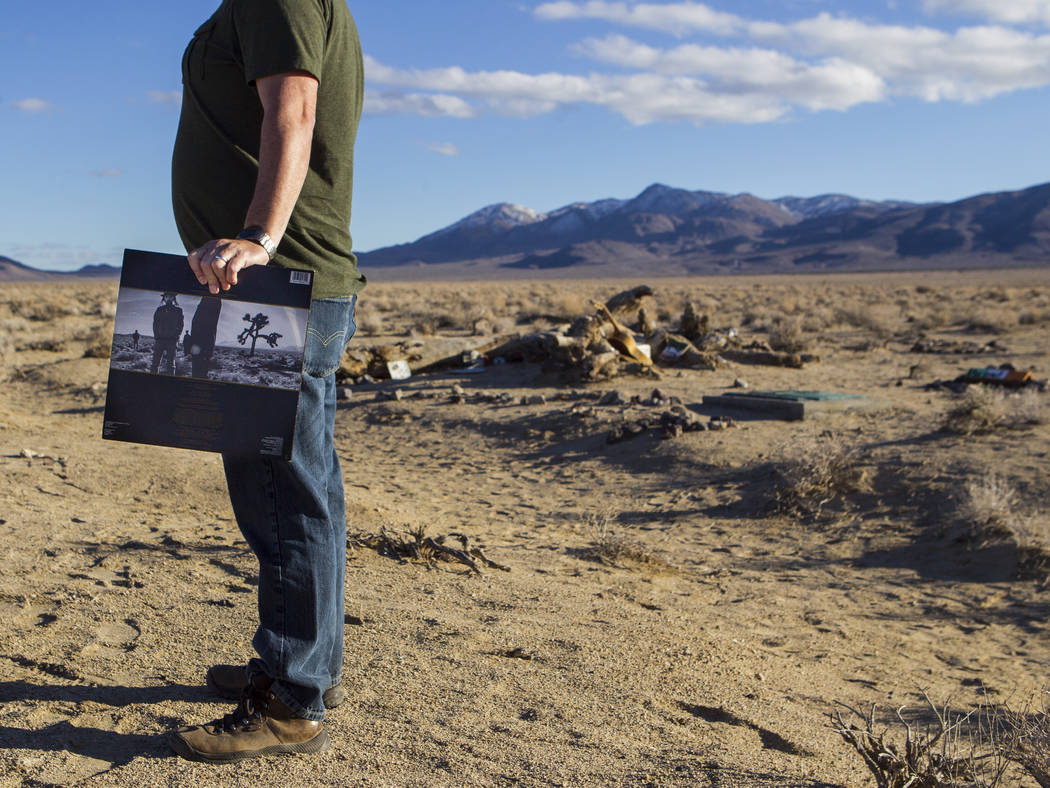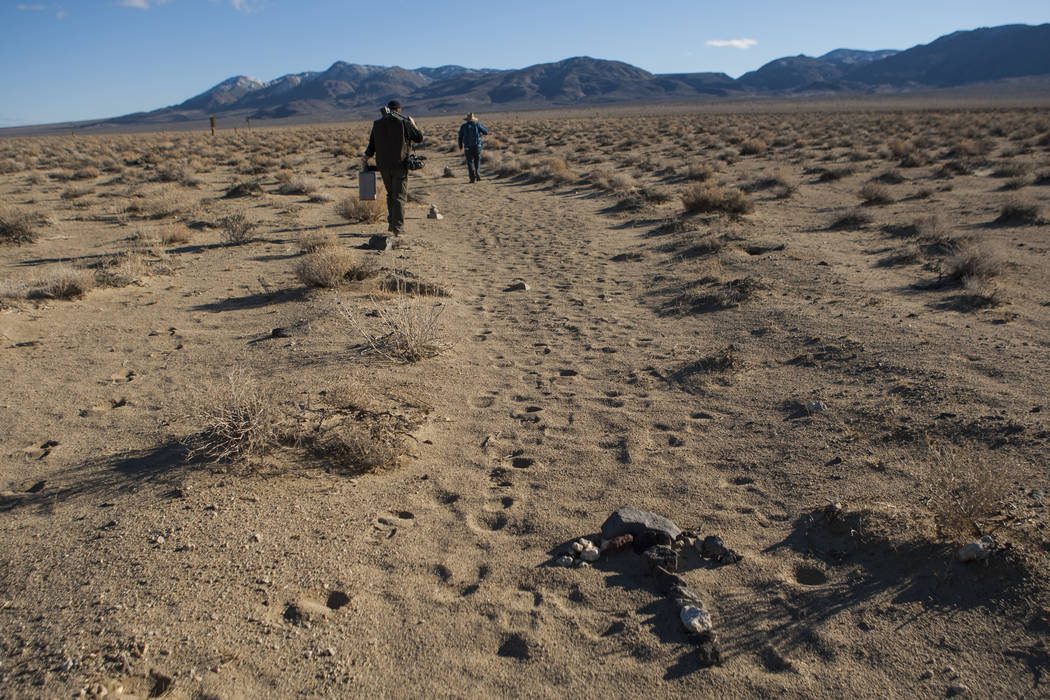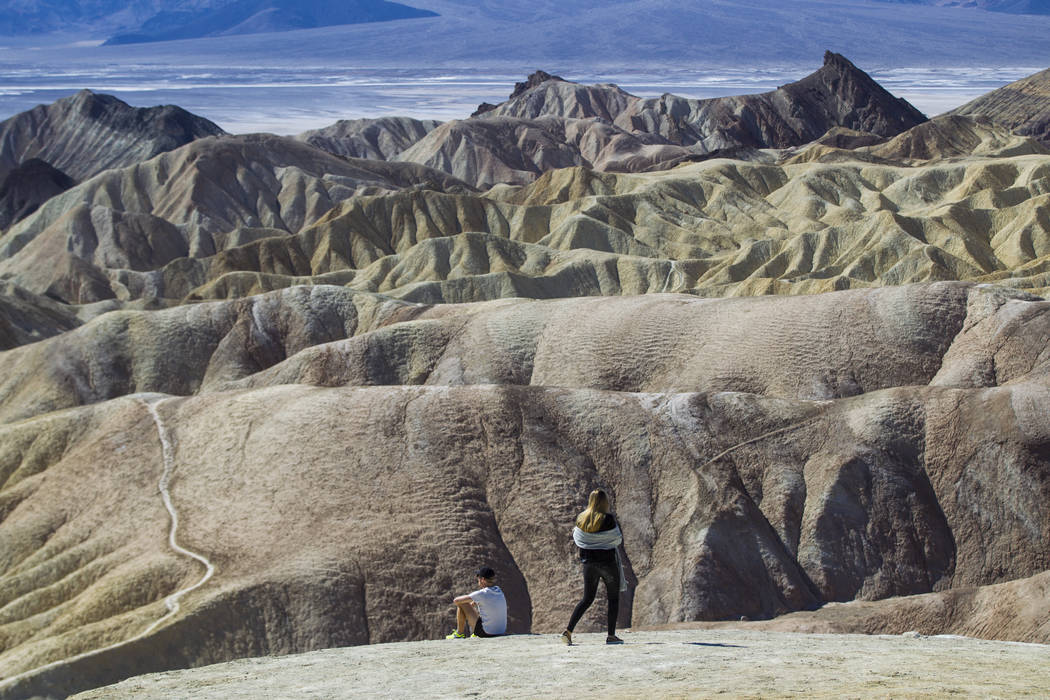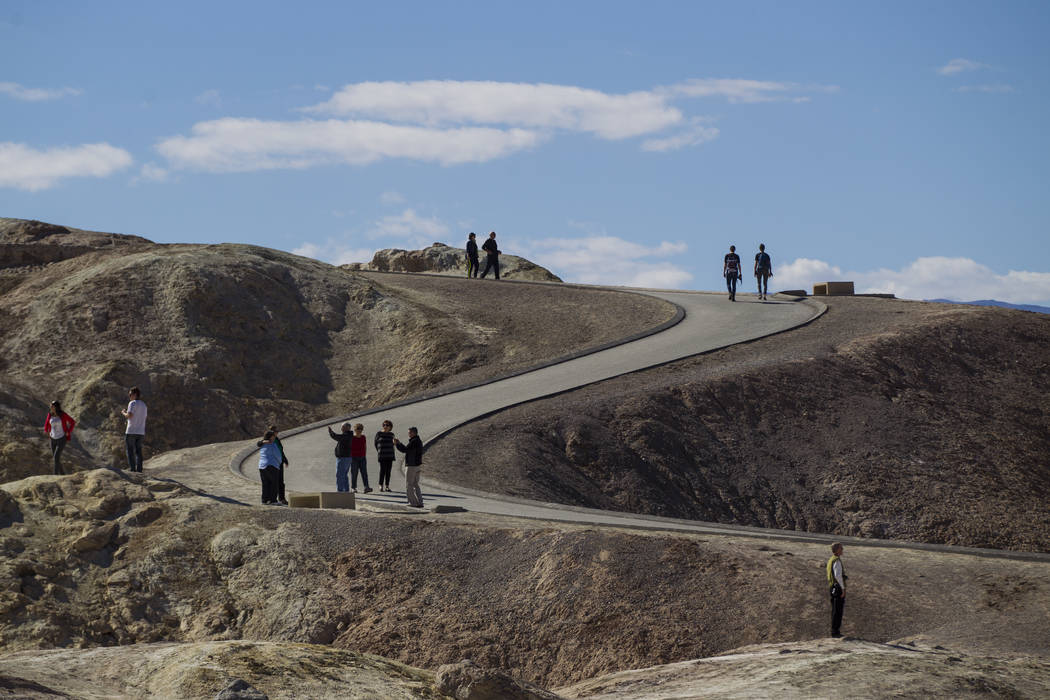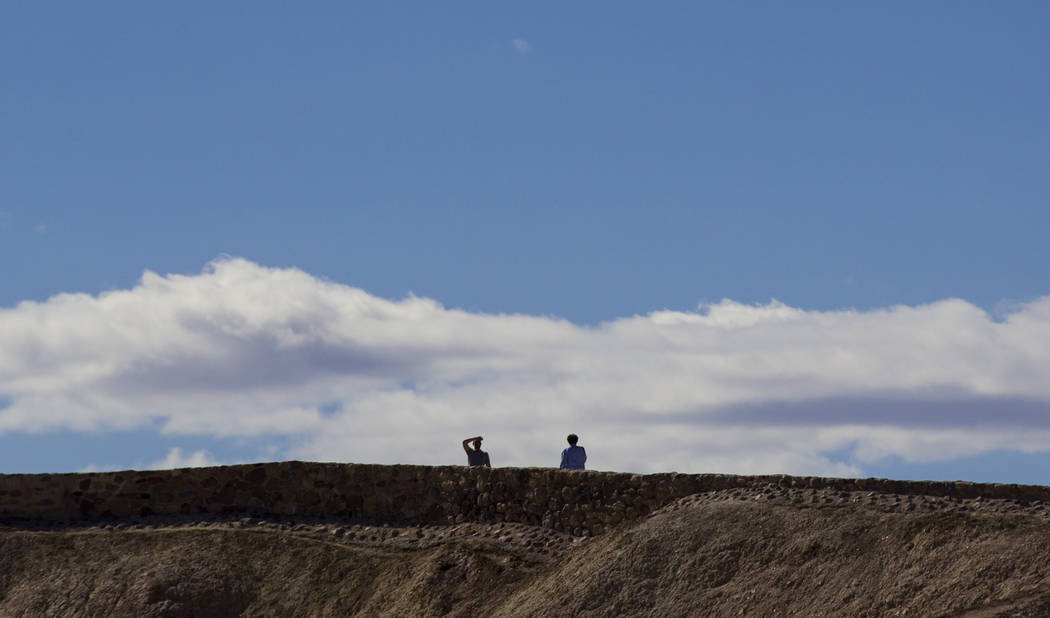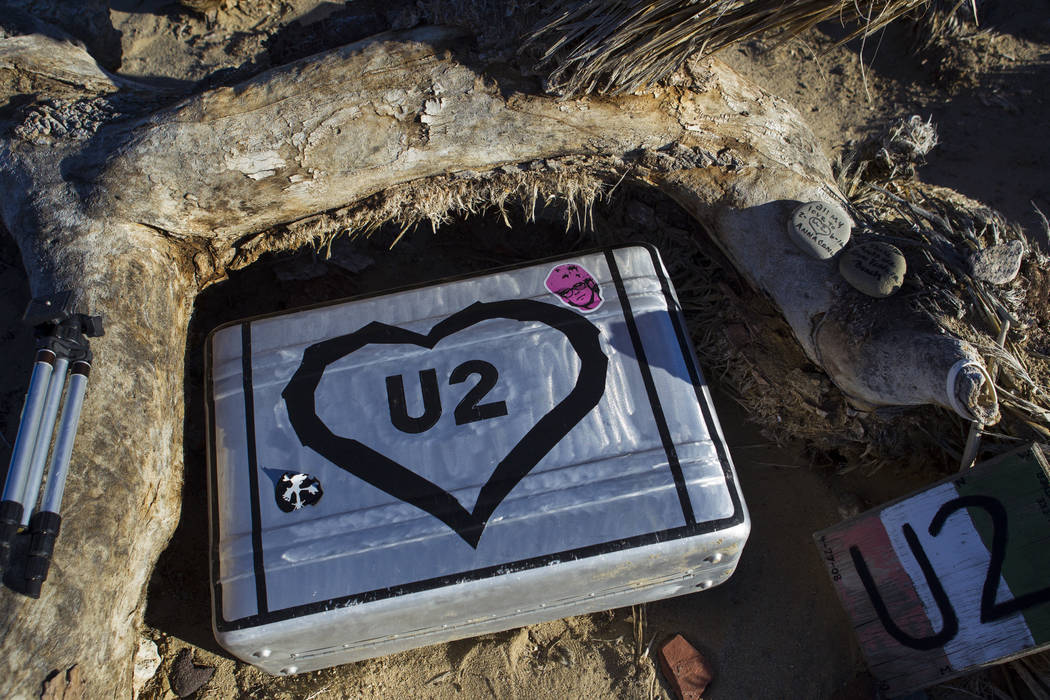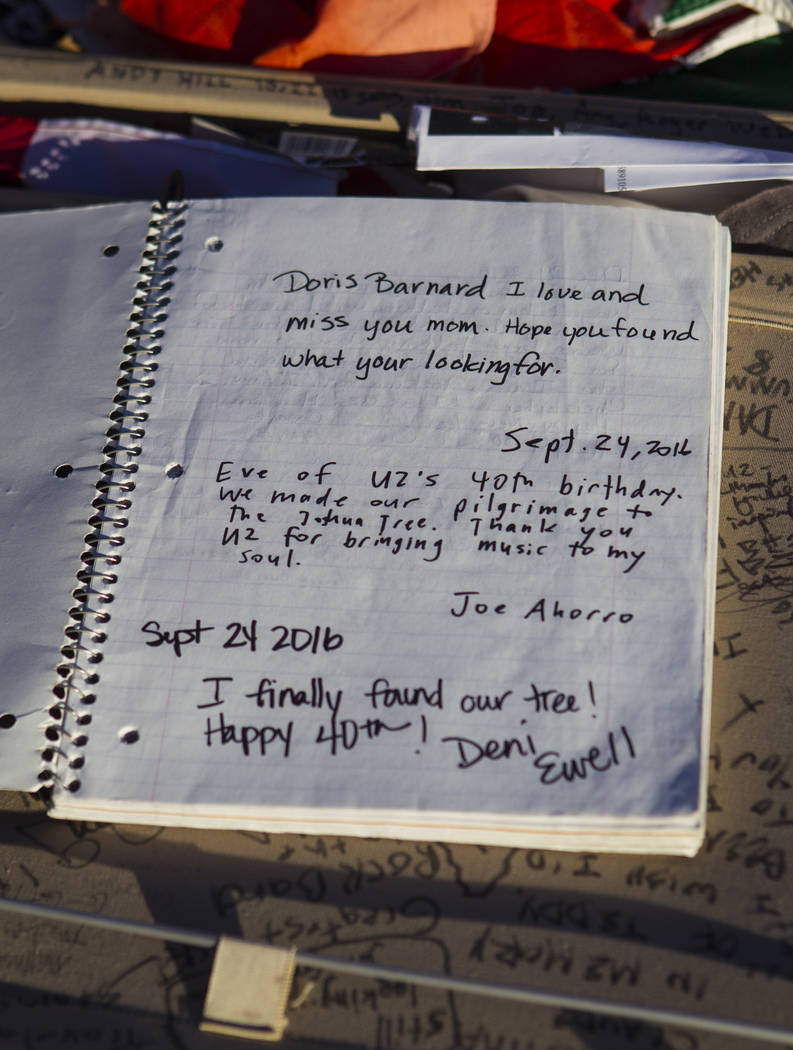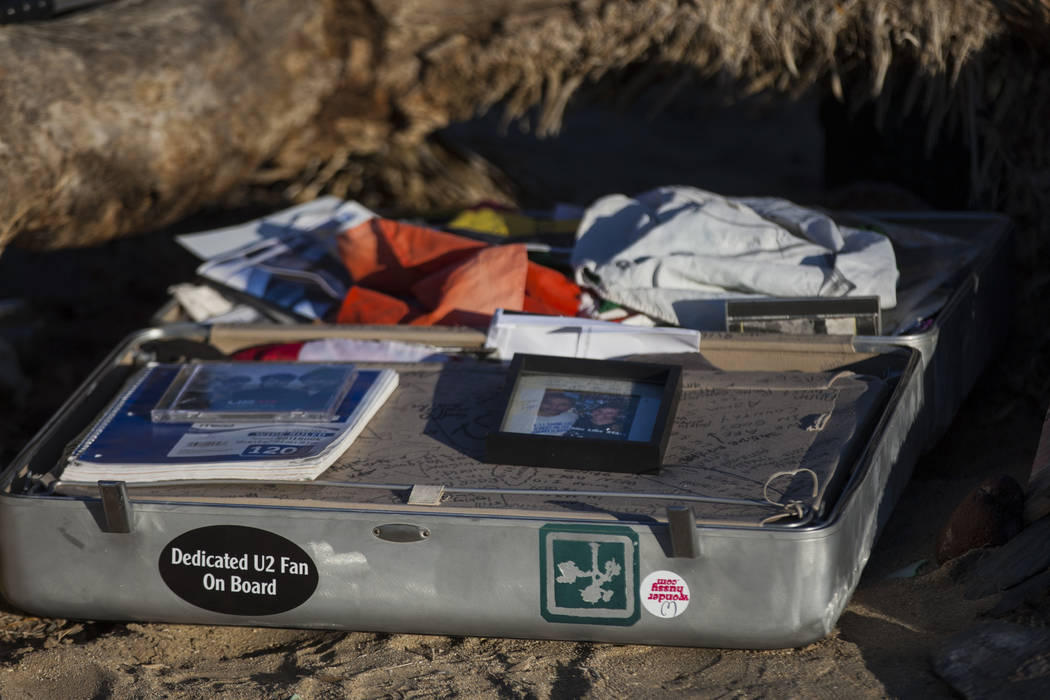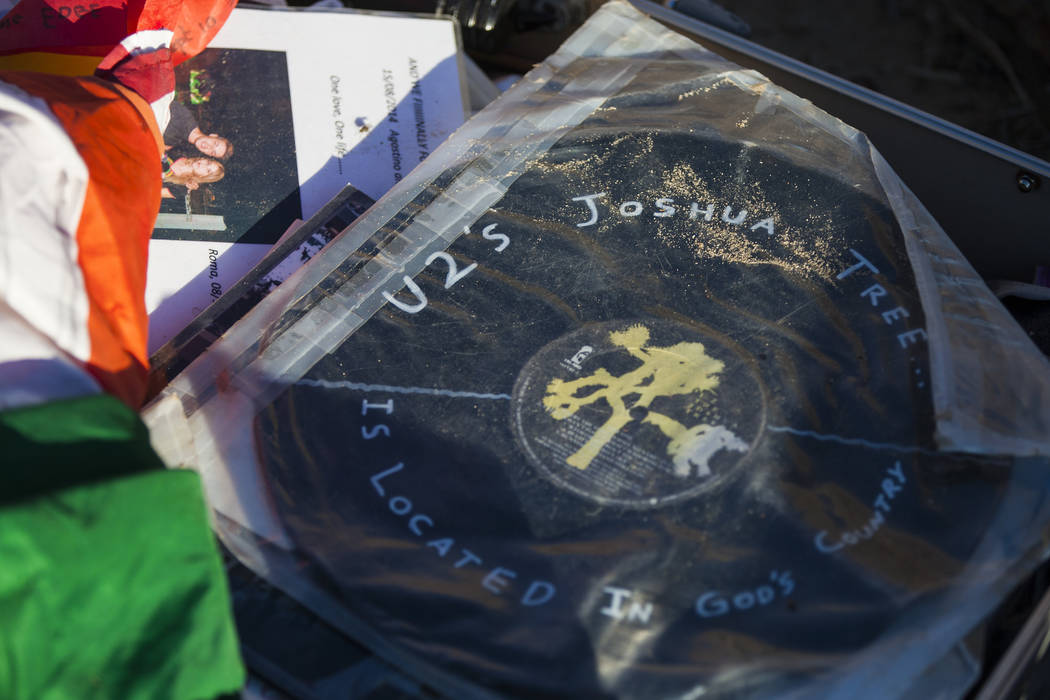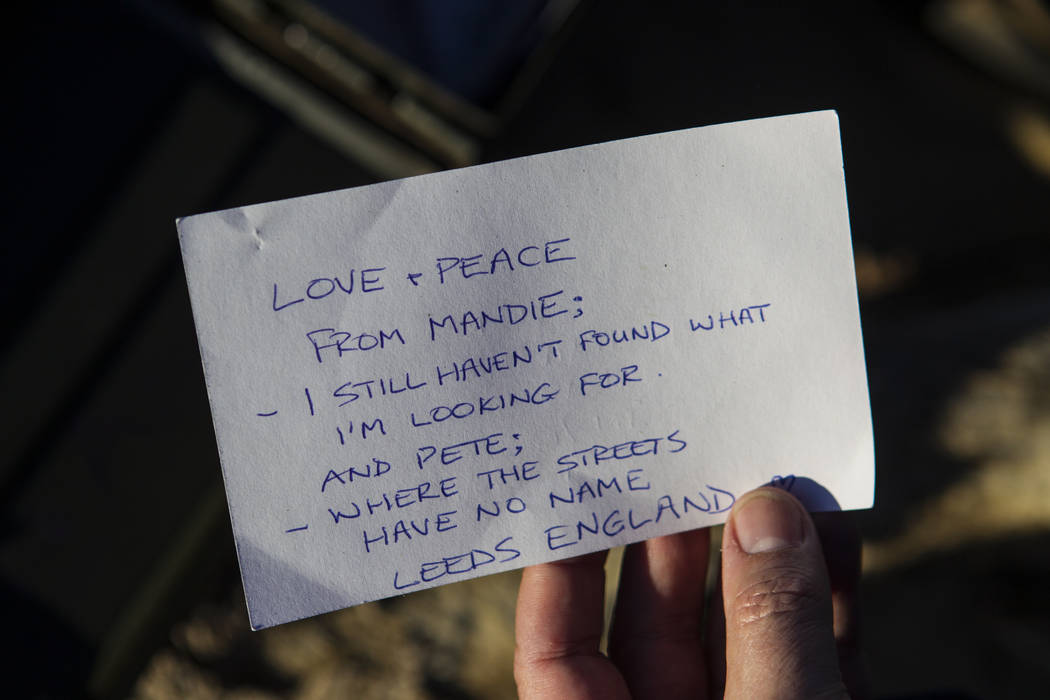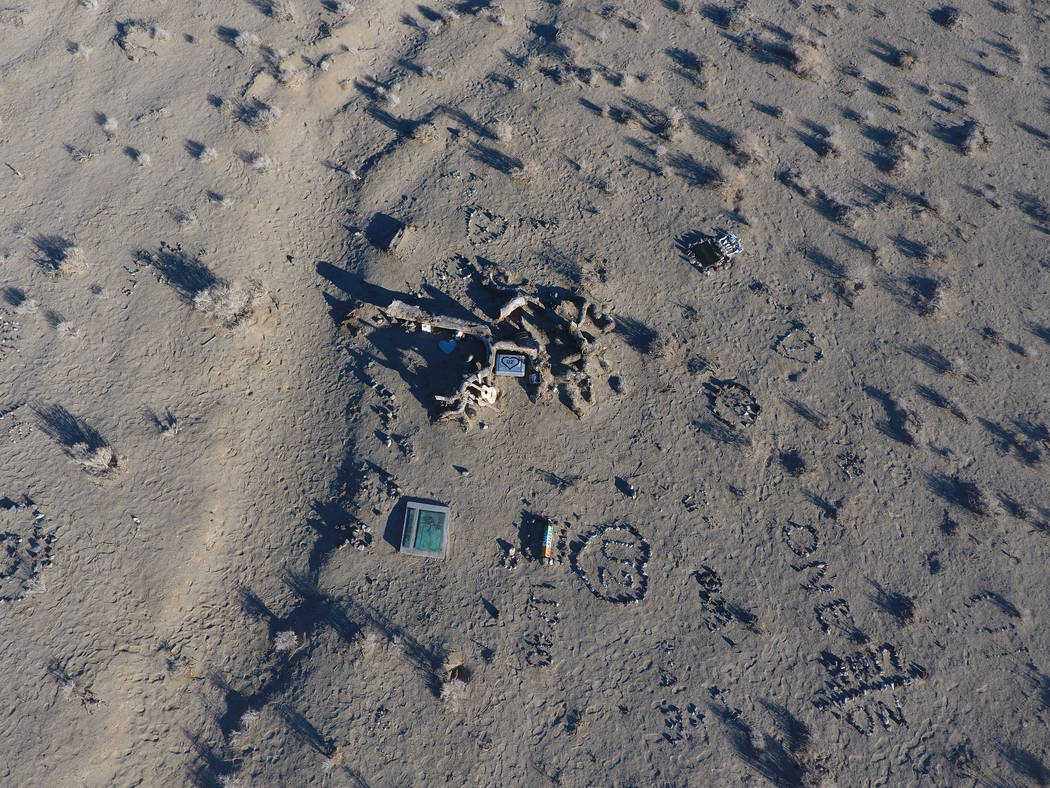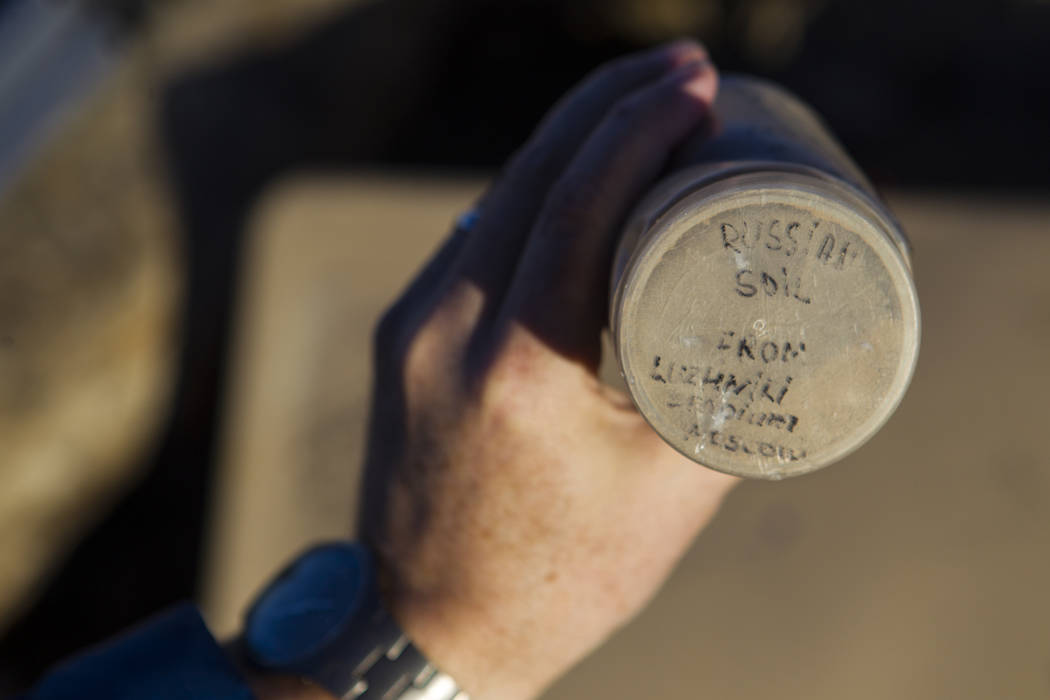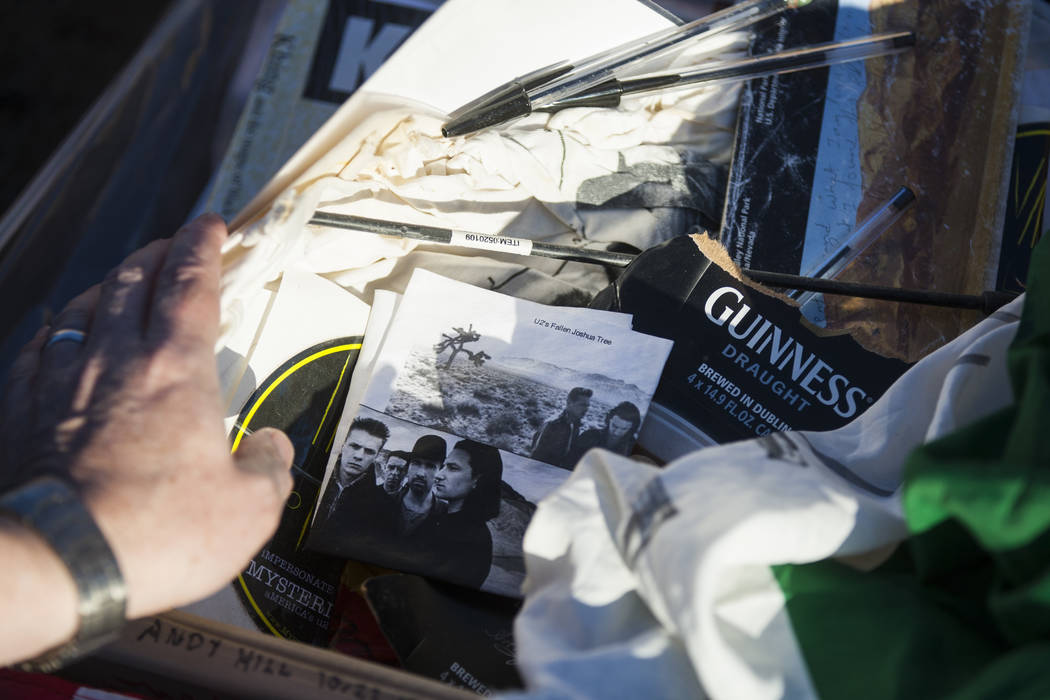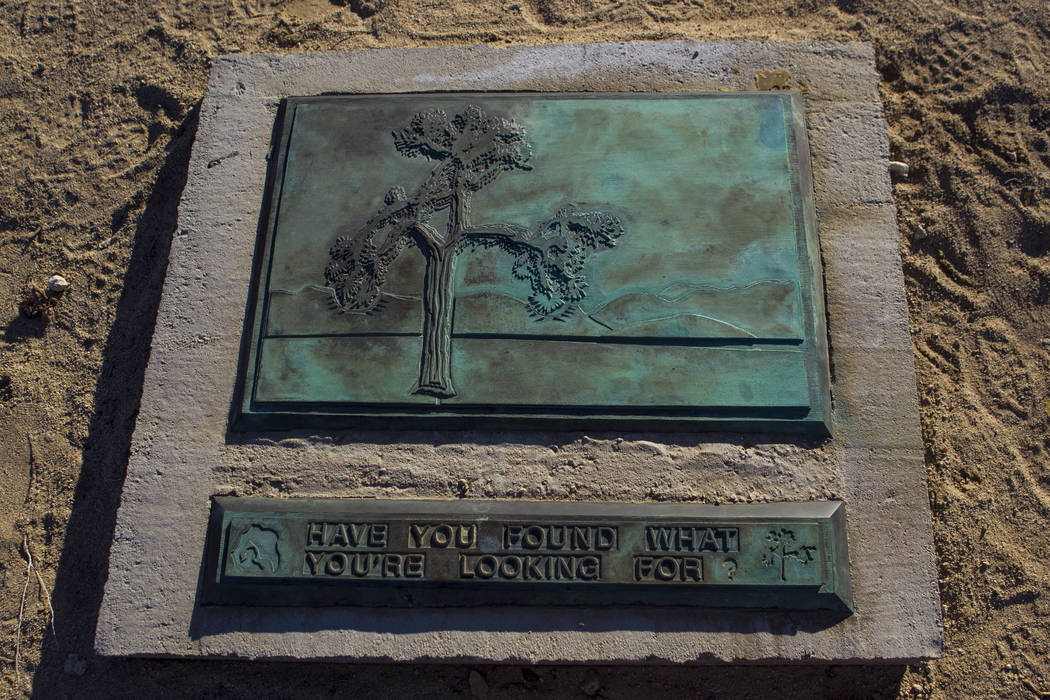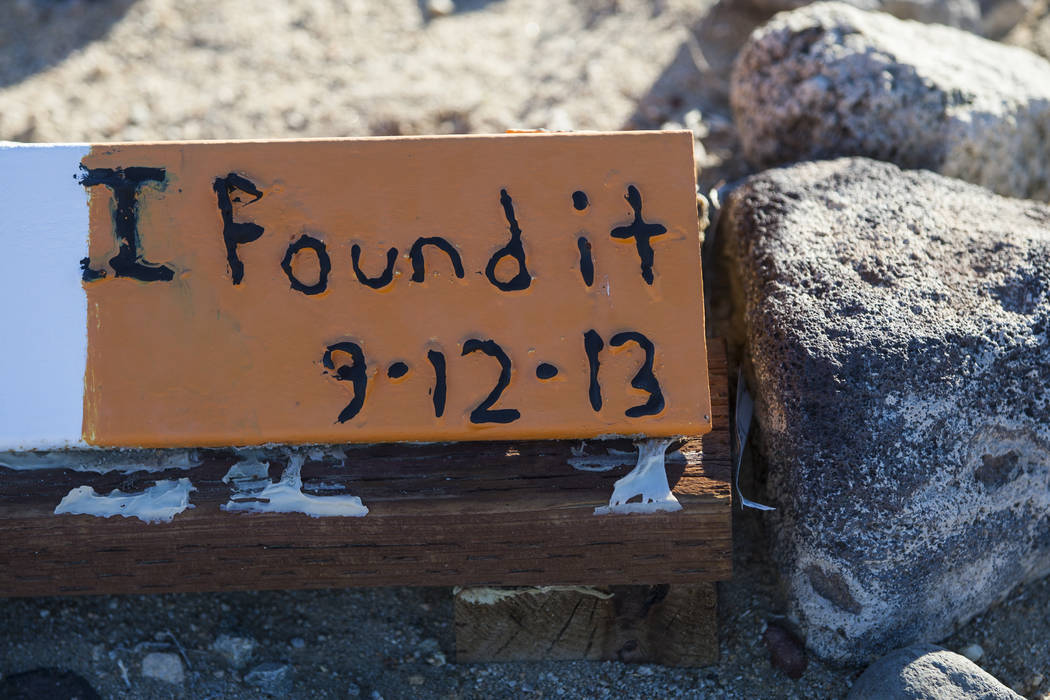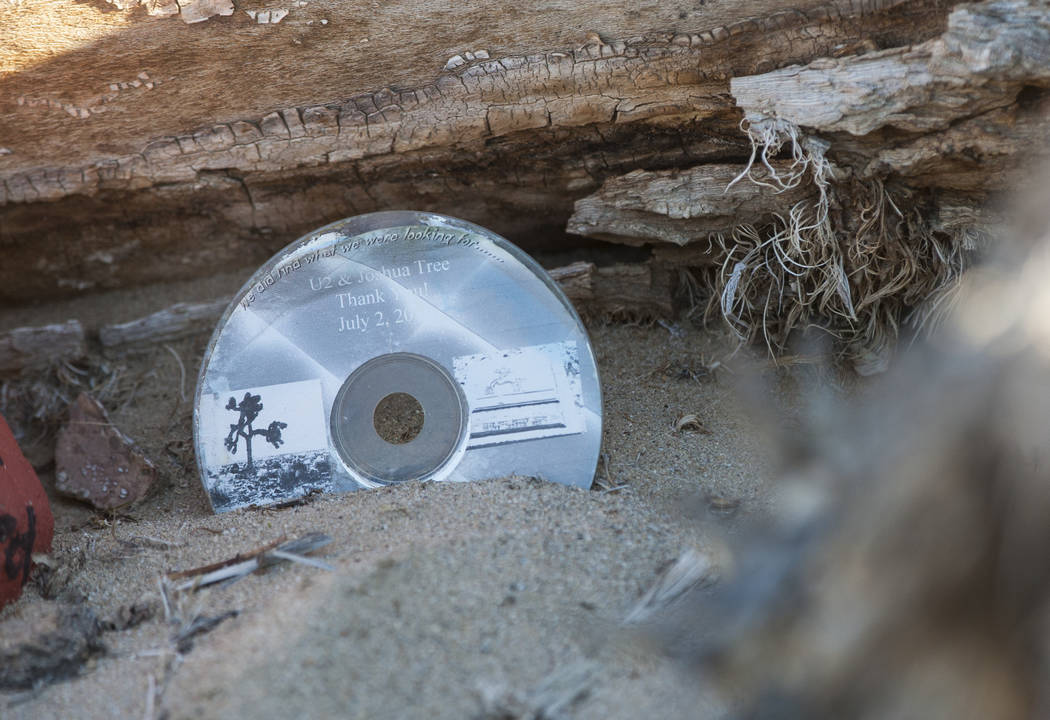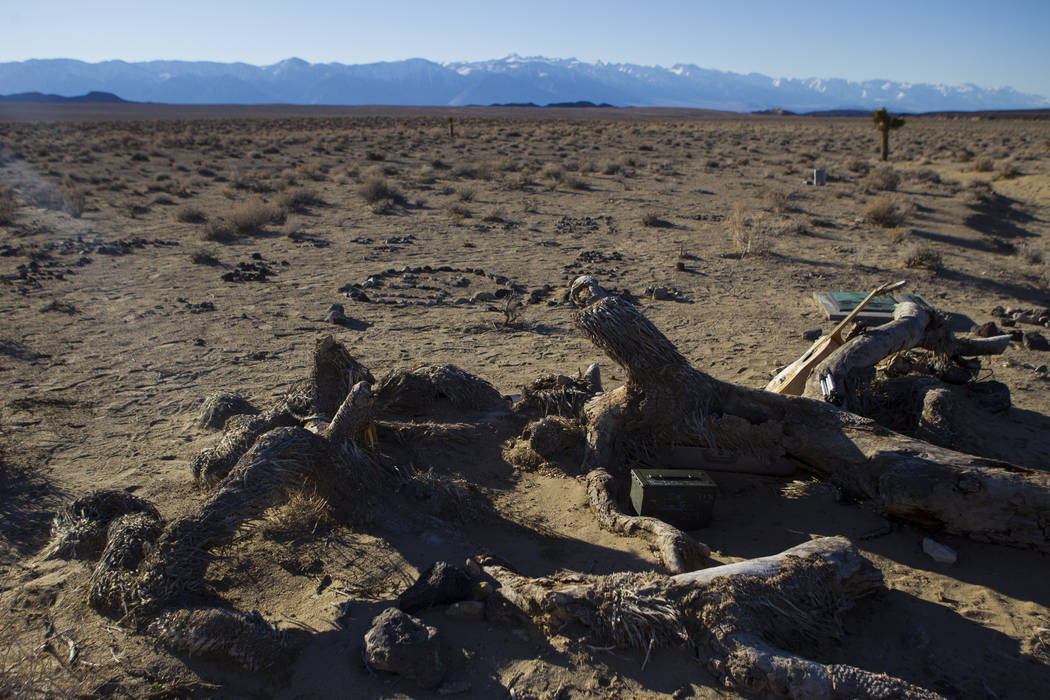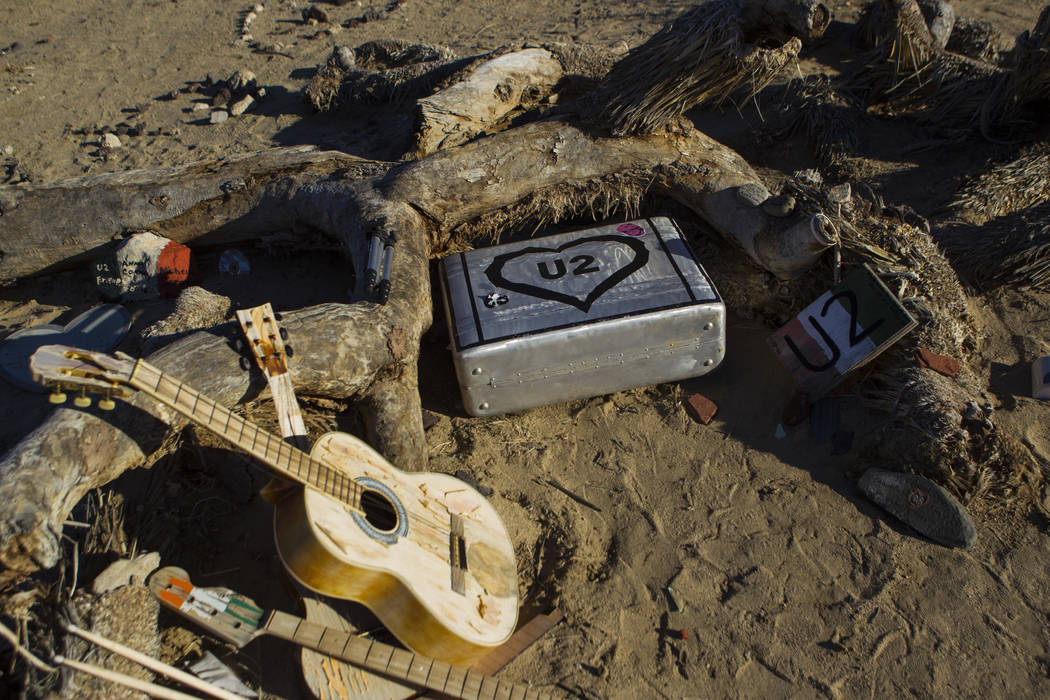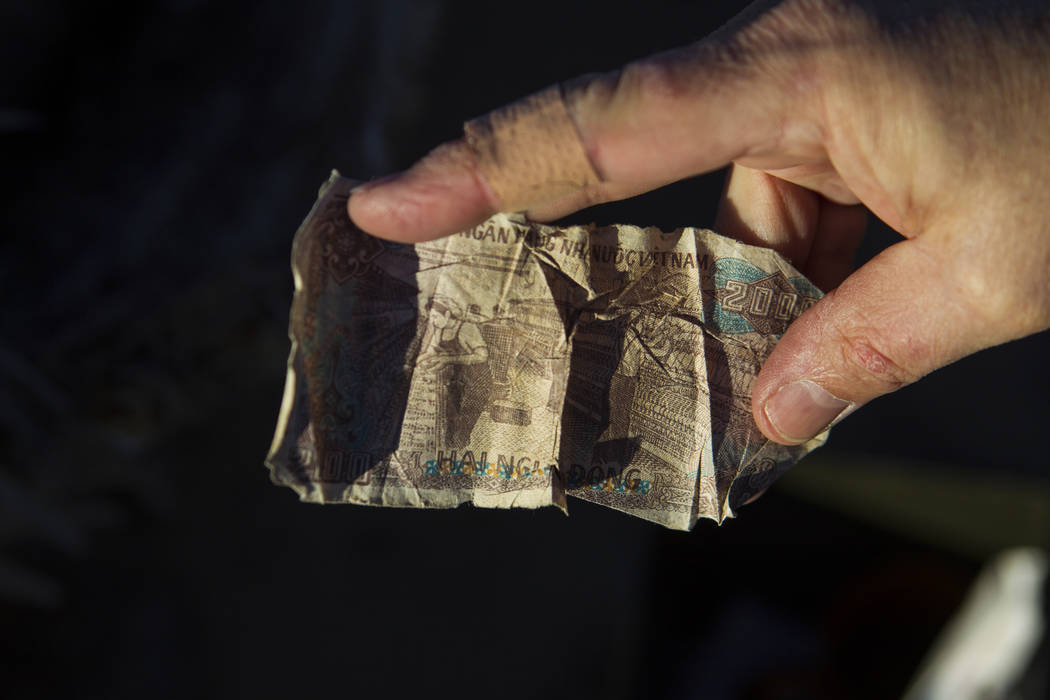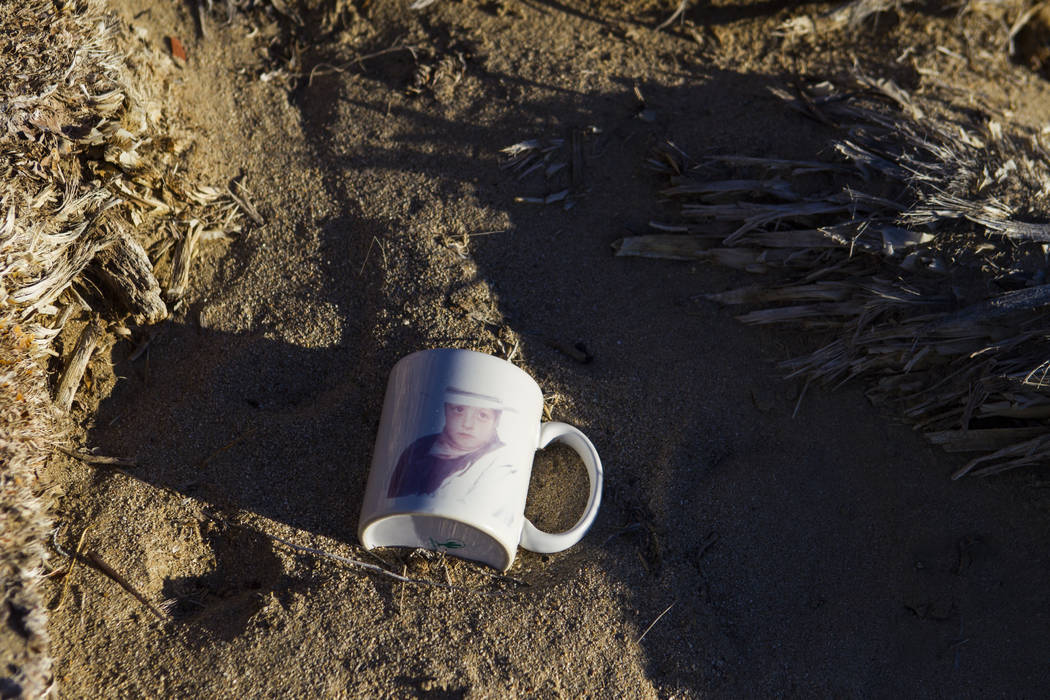Fans still find what they’re looking for at Joshua tree made famous by U2
DEATH VALLEY NATIONAL PARK, Calif. — No signs mark the way to the world’s most famous Joshua tree.
To locate this fallen piece of rock music history, you’ll need some help from the Internet and your favorite satellite-based mapping tool. If you still haven’t found what you’re looking for, check your GPS coordinates.
U2’s top-selling album “The Joshua Tree” officially turned 30 years old last month, but the actual tree pictured in the liner art never made it to the milestone.
The remnants of the plant rest in the dirt about a thousand feet from California Route 190, 9 miles west of Death Valley National Park, where devoted fans of the Irish rock band have established a small, strange shrine to the desert-tinged album and the now-dead tree that inspired it.
“It’s become this sort of pilgrimage for U2 fans like us,” said David Tokaji, who occasionally sings as Bono in a Los Angeles-based parody tribute act called the Title Trackers.
Instruments and a plaque
In the sand surrounding the fallen tree, visitors have arranged rocks to spell out messages to the band.
A cymbal and some broken guitars rest against one sun-bleached limb.
The most permanent tribute is a bronze plaque embedded in concrete and etched with a picture of the tree above the words, “Have you found what you’re looking for?”
For perhaps hundreds of U2 fans from all over the world, the answer appears to be yes.
Their offerings fill a metal suitcase and an old ammo box tucked against the dried-out trunk: personal notes, ticket stubs, framed photographs, CDs, autographed flags and concert T-shirts.
One pilgrim left behind a pair of military dog tags. Another carried a jar of soil from Moscow to the Mojave to commemorate the band’s 2010 show in Russia.
The dog tags belong to Alex Morrow, but he has no idea how they got there. The 34-year-old Army mechanic who now lives in Northern California said he was once stationed at nearby Fort Irwin, but he never ventured out in search of the famous tree.
“I’m more intrigued than anything,” Morrow said of his unwitting contribution to the shrine. “I’m a U2 fan, but I’m not like a follower or anything. I don’t think I’ve ever been to one of their concerts.”
From Las Vegas, the drive to the downed tree takes about three and a half hours — or roughly 4.2 “Joshua Trees,” if you have the record on repeat.
Tokaji and fellow Title Tracker Russell Wiener got lost the first time they visited the shrine in October 2015 to film a music video for what they called their “loving parody” of U2 called “Chopping Down the Joshua Tree.”
Wiener said he was struck by “how powerful it was to be out there,” once they finally found the place.
“It is hallowed ground,” he said.
The bronze plaque was Ernie Navarre’s idea.
“I didn’t sign it because I wanted it to be anonymous,” he said. “I just wanted to leave it there as something for people to ponder.”
Built in the dark
The Southern California artist said he was out of work and feeling uncertain about his future when he decided to go looking for the U2 tree in 2003. He wanted to mark the site with something permanent as a tribute to an album that meant a lot to him.
“One of the first CDs I ever bought was ‘The Joshua Tree.’ It really grabbed me,” Navarre said.
He couldn’t afford to have the plaque made, so he got a job at a foundry and made it himself.
After a few fruitless trips to Joshua Tree National Park in search of the tree, an Internet search led Navarre to the lonesome valley along Route 190, where he used the album cover to guide him the rest of the way.
He recruited two friends to help him haul the heavy bronze plates and about a dozen bags of concrete out to the patch of public land. They planned the job for the night of a new moon, when the desert would be at its darkest.
“I was kind of afraid of getting caught,” Navarre said. “I thought, ‘This can’t be legal.’”
Navarre, now 49 and employed at a guitar factory, said installing the plaque was a “fun adventure,” but there was also something disappointing about finding that old dead tree.
“I felt like I’d missed something,” he said. “What was I really looking for? I was just chasing the past.”
A lyrical landscape
Influential music photographer Anton Corbijn shot the album art for “The Joshua Tree” in December 1986 during a three-day road trip with the band across the California desert.
Lead guitarist David Howell Evans, better known as The Edge, describes the trip in the band’s official history, “U2 by U2.”
“It felt right to follow the music and lyrics into the landscape we had tried to conjure up,” he says in the 2009 book. “It was all fairly spontaneous. We kept driving along the road until we saw this big open hillside of these prehistoric-looking plants. We poured out of the coach, went down, Anton found a good one, and snap, snap. We shot for 20 minutes or so, climbed back on the coach and on we went.”
Corbijn’s panoramic image of the four sullen band members posed in front of the Joshua tree was used to decorate the album’s center gatefold. The distinctive yucca plant is also featured on the back cover and in silhouette on the labels for both the record and the CD, providing a logo of sorts for the band at the height of its popularity.
No trees appear on the front cover of “The Joshua Tree,” which shows the band clustered at the edge of another moody, black-and-white panorama, this one taken by Corbijn at Zabriskie Point in Death Valley.
“The Joshua Tree” would go on to sell more than 25 million copies worldwide.
Bono and company will mark the 30th anniversary of their most popular creation later this year by playing the album in its entirety during a series of shows across Europe and North America. The tour starts in May and includes 33 dates — none of them in the desert.
Contact Henry Brean at hbrean@reviewjournal.com or 702-383-0350. Follow @RefriedBrean on Twitter.
How old was it?
U2's "The Joshua Tree" turned 30 years old this year, but what about the actual tree pictured on the album?
It's hard to pinpoint its age, because there is no easy way to determine that in Joshua trees, said Todd Esque, a research ecologist for the U.S. Geological Survey in Las Vegas. The iconic desert plants do not develop annual growth rings the way other trees do, he said.
Based on the photos he's seen, he estimates the tree was "easily a couple hundred years old" when it died and toppled over more than 15 years ago in a lonesome valley just west of Death Valley National Park.
Esque couldn't say for sure what killed the U2 tree, but it probably wasn't the glare of the spotlight.
"A lot of times, I think it's drought," he said.
Iconic Death Valley pose
When Danish tourists Ole and Linette Duch brought their daughters to see Zabriskie Point in Death Valley National Park in late February, they had no idea they were following in the footsteps of the Irish rock band U2.
But the Duch family was happy — after some initial confusion — to accommodate a Review-Journal photographer's request to re-create U2's famous "Joshua Tree" album pose from roughly 30 years earlier.
Afterward, Ole Duch noted with pride that their hometown of Horsens is famous for holding large concerts despite its relatively small population of fewer than 90,000 people.
The Rolling Stones, Madonna, AC/DC, and U2 — on back-to-back nights in 2010 — have all played in the soccer stadium in Denmark's eighth-largest city.
"Our slogan is: 'Together we make things happen,'" Duch said.



